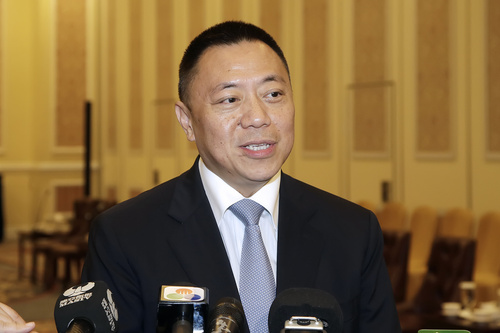 The Secretary for Economy and Finance, Mr Leong Vai Tac, speaks to reporters.
The Secretary for Economy and Finance, Mr Leong Vai Tac, speaks to reporters.
A development fund for Guangdong-Macao cooperation not only guarantees investment returns on money held in the city’s public reserves, but also reinforces Macao’s participation in the development of the Guangdong-Hong Kong-Macao Greater Bay Area.
The Secretary for Economy and Finance, Mr Leong Vai Tac, said on Thursday (12 April) that the Government was looking forward to the signing of the relevant agreement in order to initiate the cooperation with Guangdong.
The two sides already had concluded administrative work relating to the setting up of the 20-billion-renminbi fund, said Mr Leong.
The Guangdong-Macao fund was capital- and interest-protected as a matter of principle, with a mechanism for the participants to withdraw from involvement if they wished. It was guaranteed to have a 3.5-percent return annually.
The Government would have the status of a Qualified Foreign Limited Partner (QFLP) when injecting some of its fiscal reserves into the fund. The fund – with a lifespan of 12 years – would mainly invest in infrastructure projects in Guangdong. Investment decisions would be made by the Guangdong government.
When the fund reached its seventh year of operation, returns generated by the fund would be calculated. If average returns exceeded 7.8 percent, the outstanding value – net of a reserve figure held to cover risk – would then be shared by Macao and Guangdong according to a predetermined ratio of 55 percent to 45 percent, respectively.


